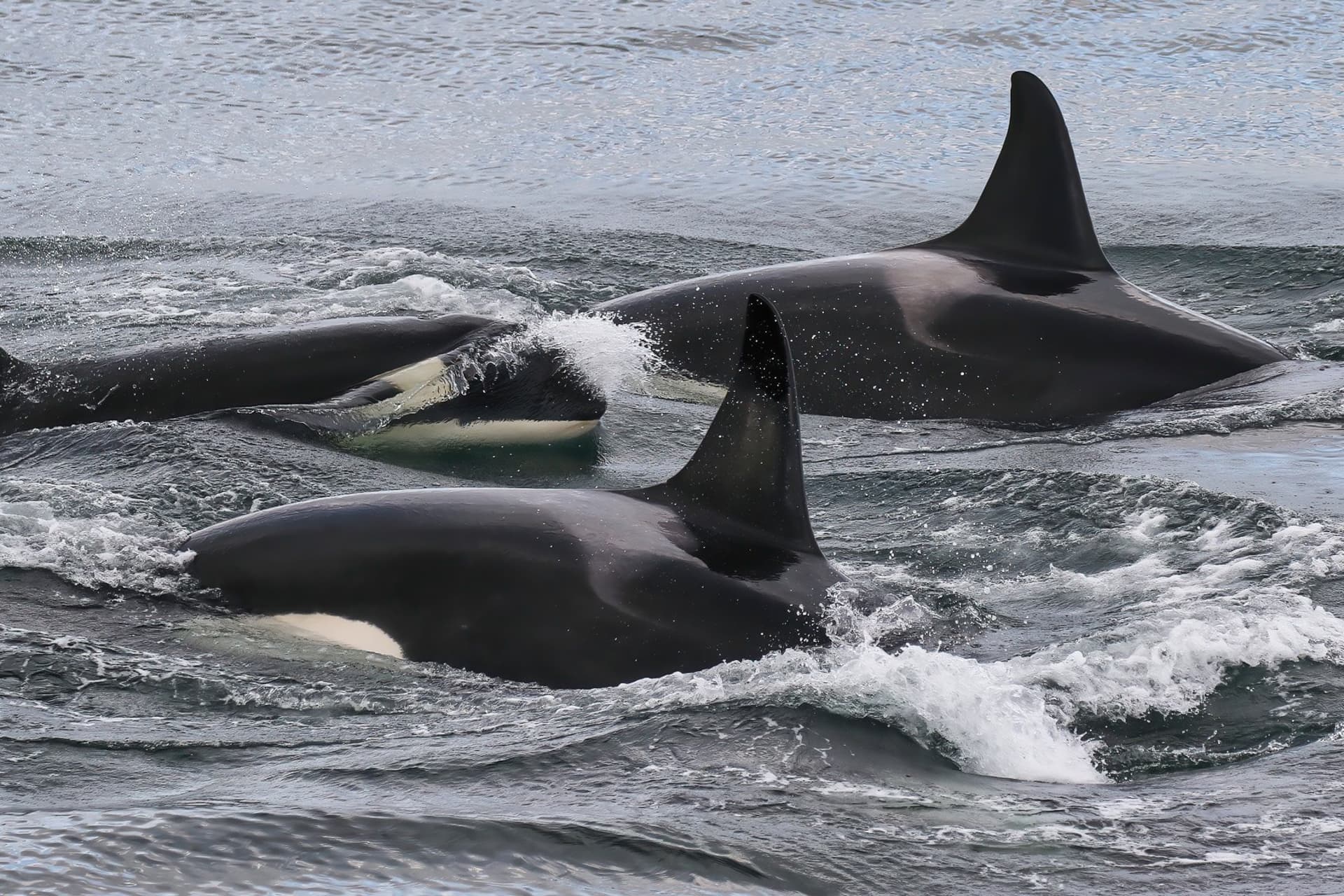
With more than 700 individuals, Alaska has the largest of these Chinook-dependent populations. While the Northern Resident killer whales number over 300, there are less than 80 Southern Resident killer whales. With the northern-most populations growing by 2-3% per year, their southern cousins continue to decline. Living closer to our urban centers, they’re more exposed to vessels and pollution—two of their three key threats—with insufficient prey at No.1, as Chinook populations are also endangered throughout the heart of their home range.
In 2021, Canadian government scientists published results from a new model to assess and better understand the consequences of individual—and collective—man-made threats to these populations. As Alaska’s fish-eating killer whales are “relatively removed from the threats to which the [other] populations are exposed” they were used as a comparative baseline to give scientists a unique insight into the trajectory the Southern Resident killer whales could take with reduced threats, and to help “inform the development of effective population conservation strategies.”
First, they examined the latest scientific evidence available to understand the impact of each threat on births and deaths in the Southern Resident killer whale population.
Insufficient prey
Using published estimates of Chinook salmon ocean abundance from 1979 to 2017, they noted that there was “strong evidence” to support a direct relationship between low prey abundance and poor survival rates, including lost pregnancies. However, they found that malnutrition alone—particularly over the last decade—did not fully explain recent trends, but after accounting for the effects of other stressors—namely vessels and contaminants—the picture became clearer.
Vessels
Previous studies have attempted to quantify the effects that both vessel noise and disturbance have on foraging. One such study—co-authored by Dr. Giles—estimated that “vessels are present 85% of the daytime and killer whales are foraging in the presence of vessels 78% of the time.” Based on this, the model was set to reflect that this ‘vessel effect’ has an equivalent impact to a 16.6% reduction in prey.
Contaminants
A number of contaminants are known to be harmful to killer whales, but most is known about the effects of PCBs, which are transferred through the food chain, and stored in blubber. One study estimated that a female transfers 77% of her PCB “load” to her calf during gestation and nursing, and so this calculation was used in this model to predict the likelihood of calf survival.

Population Modeling
By adding these known threat effects into the model, it was possible to test the population effects of each threat individually, as well as in combination. In addition, the Southern Resident killer whales are subjected to “repeated exposures to a single threat, exposures at multiple life stages to a threat, and/or exposures to multiple threats.” When taking cumulative effects into account, the scientists found that the best mirror for the current population stagnation occurred when they simulated “recent low chinook salmon abundance and its interactions with vessel disturbance and contamination.” That is, when prey is scarce, noise and pollution are amplified.
Picking these threat effects apart and understanding their influence has been the subject of a number of research studies, including the University of Washington (UW) long term health monitoring project, which transferred to Wild Orca in 2022. In fact, UW fecal sample analyses have shown that the Southern Resident killer whales release harmful PCBs into their bloodstream when malnourished, while finding scarce prey in the presence of vessels increases their stress levels.
In stark contrast, Alaska’s fish-eating killer whales have access to “rebounding” Chinook. Likewise as seals and sea lions rebound, mammal-hunters sharing the same noisy, polluted waters as the Southern Resident killer whales are faring well.
Continued below...
This new cumulative effects model gives government scientists a clear view into the current threat dynamics at play, as well as the levers to pull to limit the effects of human activities on the Southern Resident killer whales. It can also be used to test the outcomes of increased protections, and devise new conservation management plans to put them on the road to recovery.
Yet NOAA Fisheries recently claimed “it is unclear which threat to this killer whale population is the most important for recovery.” Here’s the problem with waiting for absolute certainty: assuming business as usual, and with Chinook populations as low as in recent years, this new model projects a -2.5% annual decline for the Southern Resident killer whales, with a 26% chance of extinction within 100 years.



